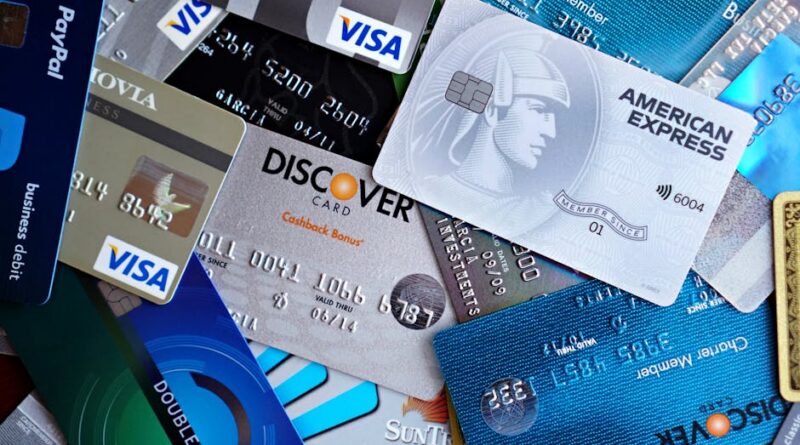8 Smart Credit Building Tips to Boost Your Score Quickly in 2025
Building a strong credit score is essential for unlocking better financial opportunities, from securing favorable loan terms to qualifying for premium credit cards. If you’re starting from scratch or recovering from setbacks, knowing how to build your credit score fast can make a significant difference. This guide dives into practical credit building tips that deliver results without unnecessary complexity. Whether you’re a young professional or someone rebuilding after financial challenges, these strategies can help you see improvements in months, not years.
Table of Contents
Understanding the Basics of Credit Scores
Your credit score is a three-digit number that lenders use to gauge your creditworthiness. It ranges from 300 to 850, with higher scores indicating lower risk. Factors like payment history, credit utilization, length of credit history, types of credit, and new inquiries all contribute to this score.
Payment history alone accounts for 35% of your score, making it the most influential factor. Credit utilization, or how much of your available credit you’re using, makes up 30%. Understanding these elements is the first step in effective credit building tips.
Many people overlook the importance of checking their credit report annually. Errors can drag down your score unnecessarily. Start by obtaining free reports from major bureaus to identify issues early.
Building credit isn’t about quick fixes; it’s about consistent habits. With the right approach, you can see your score rise by 50-100 points in six months. Focus on the foundational elements to set a solid base.

Pay Your Bills on Time Every Month
Timely payments are the cornerstone of credit building tips. Late payments can stay on your report for up to seven years, severely impacting your score. Set up automatic payments or reminders to avoid missing due dates.
Even one late payment can drop your score by 100 points or more. Prioritize credit card bills, loans, and utilities that report to credit bureaus. Consistency here builds a positive payment history over time.
If you’re struggling, contact creditors for hardship programs. Many offer temporary relief without reporting negatives. This proactive step keeps your record clean and supports faster credit recovery.
Track your progress monthly using free credit monitoring tools. Seeing improvements motivates continued discipline. Remember, on-time payments not only boost your score but also reduce interest costs.
Setting Up Payment Alerts
Use banking apps to enable alerts a few days before due dates. This simple habit prevents oversights. Combine it with budgeting to ensure funds are available.
For those with irregular income, allocate payments right after payday. This ensures bills are covered before discretionary spending. Over time, this reliability signals responsibility to lenders.
Lower Your Credit Utilization Ratio
Credit utilization measures how much credit you’re using compared to your limits. Keeping it under 30% is a key credit building tip. High utilization, even if you pay on time, can lower your score.
For example, if your total limit is $10,000 and you owe $4,000, your ratio is 40%—too high. Pay down balances to drop it below 10% for optimal results. This shows lenders you manage credit wisely.
Request credit limit increases on existing cards to lower utilization without paying extra. But avoid new applications that trigger hard inquiries. Focus on responsible use rather than maxing out limits.
Multiple cards can help spread usage. However, don’t open too many at once. Strategic management here can raise your score quickly, often within a billing cycle.
Related to this, explore how to pay off credit card debt fast for deeper strategies on reducing balances efficiently.

Add Positive Credit History with Secured Cards
If you have no credit or poor history, secured credit cards are invaluable credit building tips. These require a deposit as your credit limit, reducing risk for issuers. Use them like regular cards but pay off fully each month.
Choose cards that report to all three major bureaus: Equifax, Experian, and TransUnion. After six months of good use, many graduate to unsecured cards with refunds. This builds length of history gradually.
Authorized user status on a trusted family member’s card can also help. Their positive history boosts yours, but ensure they maintain low utilization. This piggybacking method accelerates score growth.
Avoid high-fee secured cards; opt for those with rewards. Responsible use demonstrates capability, leading to better offers. Within a year, you could qualify for prime cards.
Diversifying Your Credit Mix
A healthy credit mix includes revolving (cards) and installment (loans) accounts. Adding a small installment loan, like a credit-builder loan, enhances this. It shows varied management skills.
Don’t force diversity if it means unnecessary debt. Focus on what fits your situation. Lenders value a balanced mix, contributing 10% to your score.
For more on score factors, check our guide on credit score breakdown.
Explore Advanced Credit Building Tips
Beyond basics, dispute errors on your credit report. Inaccurate information affects 25% of reports. Use free annualcreditreport.com to review and challenge discrepancies.
Limit new credit applications to avoid inquiries, which ding your score temporarily. Space them out and only apply when necessary. This preserves your score’s momentum.
Consider credit-builder loans from credit unions. These hold payments in savings until the loan term ends, building history without risk. They’re ideal for those with thin files.
Monitor your score regularly with free services. Apps provide insights and tips tailored to your profile. Consistent tracking ensures you’re on the right path.
Building credit ties into overall finances. Pair these tips with an emergency fund to avoid future setbacks.
Advanced users might explore rent reporting services. Some platforms report on-time rent to bureaus, adding positive history. Verify legitimacy to avoid scams.
Avoid debt settlement programs unless necessary; they can harm scores short-term. Instead, focus on organic growth through habits. Patience yields lasting results.
For those with student debt, understanding student loan forgiveness programs can free up cash for credit payments.
In 2025, economic shifts may influence rates, but solid credit positions you well. Stay informed via reliable sources like the Consumer Financial Protection Bureau.

Implementing these credit building tips requires discipline but pays off immensely. Start with one or two changes, like on-time payments and low utilization, for quick wins. Track progress quarterly to adjust as needed.
A higher score opens doors to lower interest rates, saving thousands on loans. It also improves rental approvals and job opportunities in finance sectors. Invest time now for future security.
If debt is overwhelming, consider professional counseling. Non-profits offer free advice without bias. Combining counseling with these tips accelerates recovery.
Ultimately, building credit is about financial literacy. Educate yourself continuously to make informed decisions. Your efforts today shape tomorrow’s opportunities.
Revisit your plan every six months. As your score improves, reassess goals like home buying or investing. Sustainable habits ensure long-term success.
For beginners, start small and scale up. Consistency trumps perfection. With these strategies, fast credit building is achievable in 2025.




